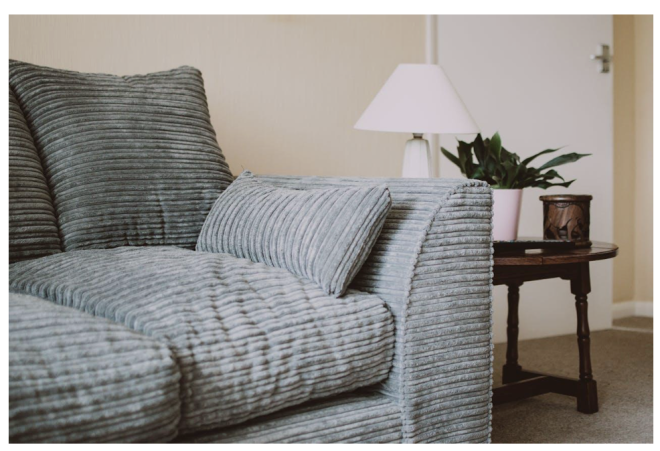- Change theme
How Upholstery Foam Grades Compare

Not all foam is created equal.
22:26 30 July 2025
Not all foam is created equal.
If you’ve ever sunk into a sofa cushion that lost its shape within months, you already know that comfort depends on more than fabric. It’s what’s inside that counts. Specifically, the upholstery foam.
Choosing the right foam grade can completely transform your project. Whether you're upholstering a dining chair, building a bespoke sofa, or restoring vintage furniture, your foam choice affects the feel, support, and lifespan of the piece.
What Do We Mean by Foam Grade?
When people talk about "foam grade," they’re usually referring to two core properties: density and firmness.
In the UK, density is measured in kilograms per cubic metre (kg/m³). It tells you how much material is packed into a given volume. Denser foam doesn’t necessarily feel firmer, but it will usually last longer. For example, a foam with a density of 30kg/m³ has more substance than one rated at 20kg/m³.
Firmness, also called hardness, is often rated using Newtons (in the UK) or IFD/ILD (Indentation Force Deflection in the US). This measures how much pressure is needed to compress the foam by a certain percentage. The higher the number, the firmer the foam.
Think of density as long-term performance and firmness as immediate feel. A soft foam can still be high-density and durable, while firm foam may still break down quickly if it’s low-density.
Types of Upholstery Foam by Grade
Below are the most common options used in upholstery projects.
- Low-Density Foam (e.g. 18kg/m³ – 21kg/m³)
Light, cheap, and often used in decorative or rarely-used furniture. It compresses easily and wears out fast. Best avoided for seats or high-use items.
- Medium-Density Foam (around 24kg/m³ – 28kg/m³)
A versatile middle ground. Medium-grade upholstery foam works well for back cushions, headboards, and occasional-use chairs. You’ll get decent support without the stiffness.
- High-Density Foam (30kg/m³ and above)
This is the go-to for hardworking furniture, sofas, benches, armchairs, or anything used daily. High-density foam offers better support, shape retention, and resistance to wear.
- Reflex Foam
A high-performance polyurethane foam known for quick recovery and firm support. Great for seat cushions and mattresses.
- Memory Foam
While not used as often in standard upholstery, it’s ideal in luxury seating or hybrid cushion designs. It moulds to the body, absorbs pressure, and pairs well with firmer base foam layers.
Matching Foam Grades to Projects
- Dining chairs: A high-density foam of around 30kg/m³ provides firm support that won’t flatten after a few meals.
- Sofa seat cushions: Use high-density foam with a layer of Dacron wrap or fibre for comfort and structure.
- Back cushions: Go for a softer or medium-grade foam to provide a bit of give when you lean back.
- Headboards: Medium or even low-density foam works well, since these don’t take weight or constant pressure.
- Footstools and benches: Firm foam adds durability, particularly important for commercial or high-traffic settings.
Why Foam Grade Affects Comfort and Longevity
Using the wrong grade of upholstery foam is one of the biggest upholstery mistakes you can make.
Bear in mind the purpose of a seat cushion is to provide comfort.
Choose something too soft, and the cushion flattens quickly. Too firm, and the seat feels like a plank of wood.
High-density foam resists sagging. It supports body weight more evenly, preventing dips and warping. Over time, it helps the fabric stay taut and the overall shape stay clean. That means fewer wrinkles, fewer repairs, and a longer lifespan for your furniture.
How Other Upholstery Components Work with Foam
Foam isn’t working alone. It relies on other upholstery components to do the job properly.
Dacron (polyester wrap) gives foam cushions a softer edge and helps reduce fabric wrinkling. It’s often used around high-density foam in seat cushions.
Stockinette sleeves help slide the wrapped foam into cushion covers and protect the inner layers from friction.
Webbing, springs, and base boards are also vital. These components distribute weight and absorb pressure before it even reaches the foam layer. Using poor-quality support structures underneath even the best foam leads to faster breakdown.
UK Fire Regulations and Foam Safety
Most upholstery foam sold for furniture use must comply with BS 5852 (Cigarette and Match test). This regulation ensures the foam resists ignition from common fire sources.
Always check with your supplier that the foam is certified and safe for use in domestic or public settings. If you’re working on a commercial fit-out, especially in hospitality, healthcare, or transport, compliance is a legal requirement.
Final Thoughts
When it comes to furniture, the outside catches the eye, but it’s the inside that defines comfort and durability. The upholstery foam you choose can make or break a project.
Before you cut, glue, or staple, take a few minutes to think about how the piece will be used, how often, and by whom. And remember, foam works best when paired with the right upholstery components to support and protect it.
